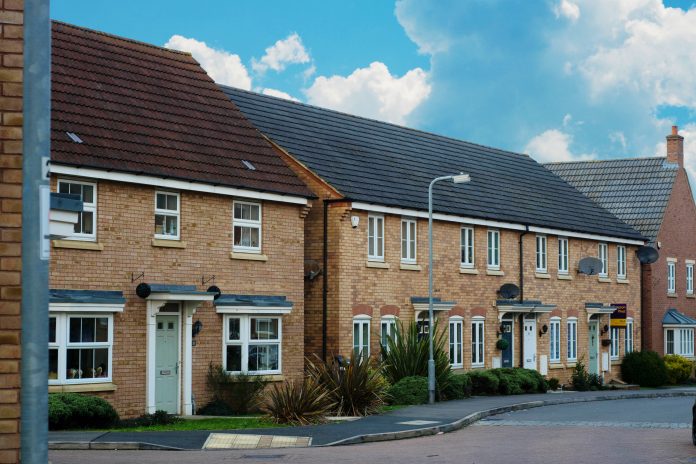Overall there is no alternative but for councils to increase the supply of council homes for rent at genuinely affordable rents, but using the already existing housing stock to house people is something that shouldn’t be overlooked, says GMB London
GMB has called for London local authorities to be given powers to use vacant dwellings left empty for prolonged periods to house people on their housing waiting list. This after a study by GMB which compares the number of long-term vacant dwellings (those empty for at least six months) in each borough in 2018 and the number of households on London Local Authority housing waiting lists in the same year.
In 2018 London had a total of 22,481 long-term vacant dwellings, 2,244 more than the year before. At the same time, in 2018 there were 232,409 households on Local Authority housing waiting lists.
Southwark is the borough which in 2018 had the most total long-term vacant dwellings in London with 1,766. The number of households on the Southwark Council housing waiting list in 2018 was 6,778.
Other London boroughs with a high number of long-term vacant dwellings in 2018 include Croydon which had 1,521 long-term vacant dwellings and 5,138 households on their waiting list; Camden had 1,210 long-term vacant dwellings and 3,074 on their waiting list; Kensington and Chelsea had 1,115 long-term vacant dwellings and 3,330 on their waiting list; Lewisham also had 1,115 long-term vacant dwellings and 9,921 households on their waiting list, and Barnet had 1,065 long-term vacant dwellings and had 2,648 households on their housing waiting list in 2018.
The figures covering 33 boroughs in London are set out in the table below, ranked by the borough that had the highest number of long-term vacant dwellings in 2018. This is from a new study by GMB London Region of official data for 33 boroughs in London.
It compares the number of long-term vacant dwellings in 2018 by borough and the number of households on each local authority’s housing waiting list in 2018.
| Rank | London Boroughs | No. of long-term vacant dwellings (Oct 2018) | No. households on Local Authority waiting lists (2018) |
| London | 22,481 | 232,409 | |
| 1 | Southwark | 1,766 | 6,778 |
| 2 | Croydon | 1,521 | 5,138 |
| 3 | Camden | 1,210 | 3,074 |
| 4 | Kensington and Chelsea | 1,115 | 3,330 |
| 5 | Lewisham | 1,115 | 9,921 |
| 6 | Barnet | 1,065 | 2,648 |
| 7 | Enfield | 1,026 | 3,444 |
| 8 | Hackney | 933 | 12,766 |
| 9 | Lambeth | 920 | 23,364 |
| 10 | Newham | 894 | 26,139 |
| 11 | Ealing | 850 | 13,685 |
| 12 | Greenwich | 830 | 13,618 |
| 13 | Haringey | 732 | 9,650 |
| 14 | Sutton | 686 | 1,587 |
| 15 | Tower Hamlets | 634 | 18,808 |
| 16 | Havering | 630 | 2,234 |
| 17 | Islington | 621 | 14,469 |
| 18 | Merton | 611 | 9,802 |
| 19 | Hillingdon | 563 | 1,687 |
| 20 | Waltham Forest | 552 | 7,330 |
| 21 | Bexley | 488 | 6,613 |
| 22 | Richmond upon Thames | 488 | 3,944 |
| 23 | Bromley | 482 | 3,438 |
| 24 | Redbridge | 457 | 5,408 |
| 25 | Brent | 405 | 3,498 |
| 26 | Westminster | 304 | 3,907 |
| 27 | Harrow | 299 | 1,883 |
| 28 | Kingston upon Thames | 292 | – |
| 29 | Hammersmith and Fulham | 278 | 1,644 |
| 30 | City of London | 244 | 656 |
| 31 | Hounslow | 191 | 2,157 |
| 32 | Wandsworth | 173 | 5,202 |
| 33 | Barking and Dagenham | 106 | 4,587 |
Warren Kenny, GMB regional secretary, said: “Giving local councils the powers to use homes left empty for prolonged periods would help to cut the unacceptably high waiting lists across London.
“Bringing long term empty homes and flats back into use has to have a very high priority. Residential units above shops, in particular, can be left unoccupied for long periods and councils should be alert to the potential of such empty homes to cut waiting lists.
“Property owners knowing that councils had such powers would be a big incentive for these owners to keep properties occupied. It would also reduce the incentive for overseas investors investing in buy to leave empty to do so.
“Overall there is no alternative but for councils to increase the supply of council homes for rent at genuinely affordable rents, but using the already existing housing stock to house people is something that shouldn’t be overlooked.”

















